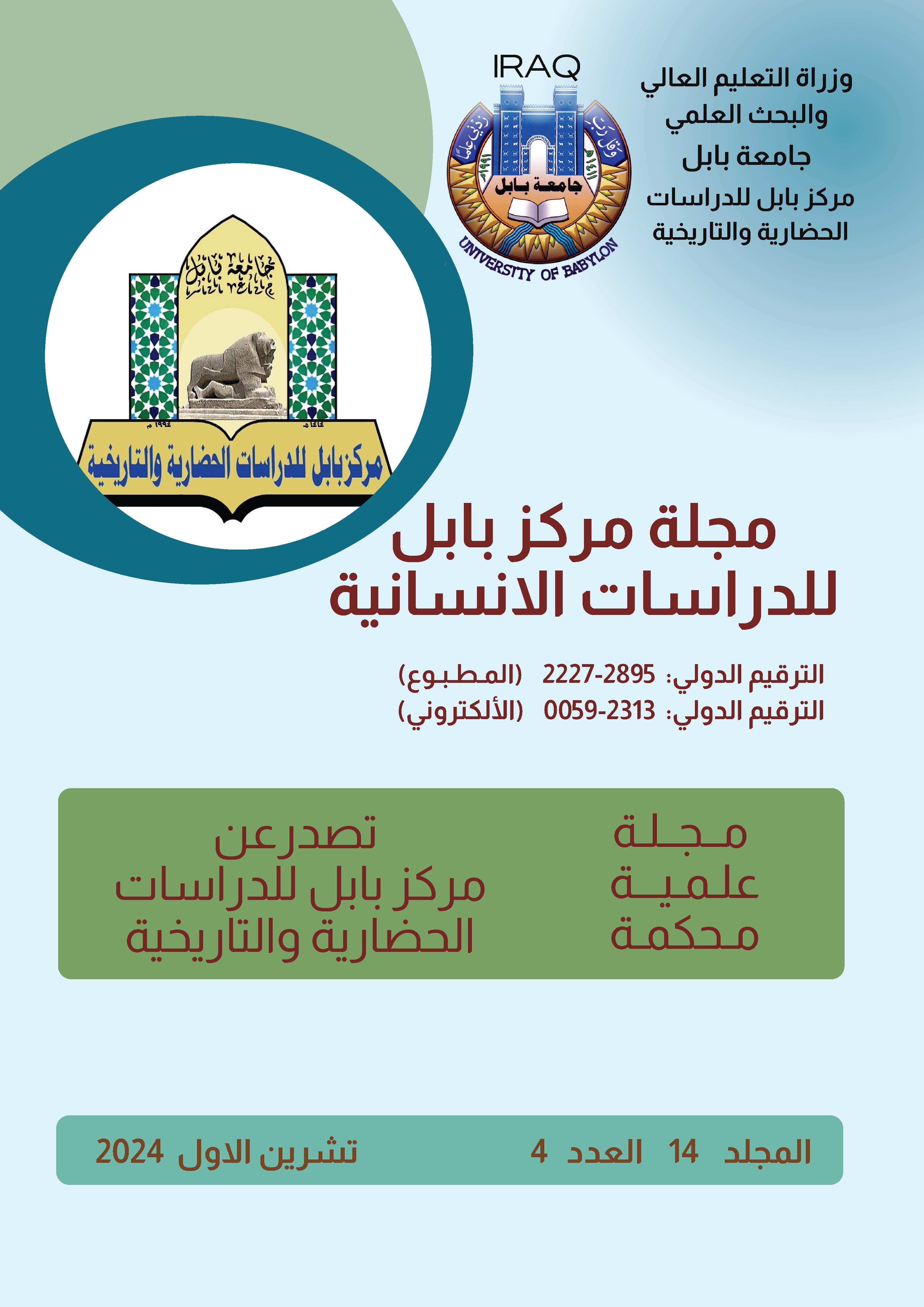Poetry of Al-Hakam bin Abdul Al-Asadi " Technical study "
Keywords:
poetry, artistic structure, humor, sarcasm, sarcasmAbstract
The poet Al-Hakam bin Abdul-Asadi represents the trend of submissiveness and begging that emerged in Kufa society. One of the most important reasons that led me to choose this poet was the desire to learn about his writing style, the contents of his poetry, and the quality of his photography. The artistic structure in Ibn Abdel’s poetry was based on direct involvement in the main purpose. In addition, three structural patterns emerged for him: poems, pieces, and fragments. The poet Al-Hakam bin Abdul Al-Asadi is considered one of the most important poles of the poetry movement in Kufa; as he is the most prominent representative of the trend of submission and obedience. In addition to that, he relied on different poetic genres such as poetry of begging, humor, sarcasm, mockery, and others in order to obtain money. The books of biographies, biographies, and classes and others did not mention a specific date for his birth, as well as his death, except for what Al-Zarkali mentioned, especially in determining the year of his death as one hundred after the Hijra. It should be noted that Al-Zarkali is considered one of the scholars who came very late from the poet's era. The artistic structure in Ibn Abdul's poetry was based on direct entry into the main purpose. In addition, three structural styles emerged in him, represented by poems, fragments, and fragments. The poet employed humor, sarcasm, and mockery in his poetry, in order to gain money, and sometimes he used these methods to detract from others, as in his mockery of his sons. As for the most prominent styles that dominated his poetry, they were sarcasm and mockery of body parts
The poet used humor, sarcasm, and sarcasm in his poetry. Intentionally to gain money, and in some cases Sometimes he uses these methods to belittle others, as in his mockery of his children. The most prominent patterns that dominated his poetry are sarcasm and ridicule of body parts, as well as personal sarcasm. Likewise, the poet had a high sense of the value of graphic image patterns, such as simile, metaphor, and metonymy. Therefore, these patterns took their aesthetic place in shaping his poetic image.







